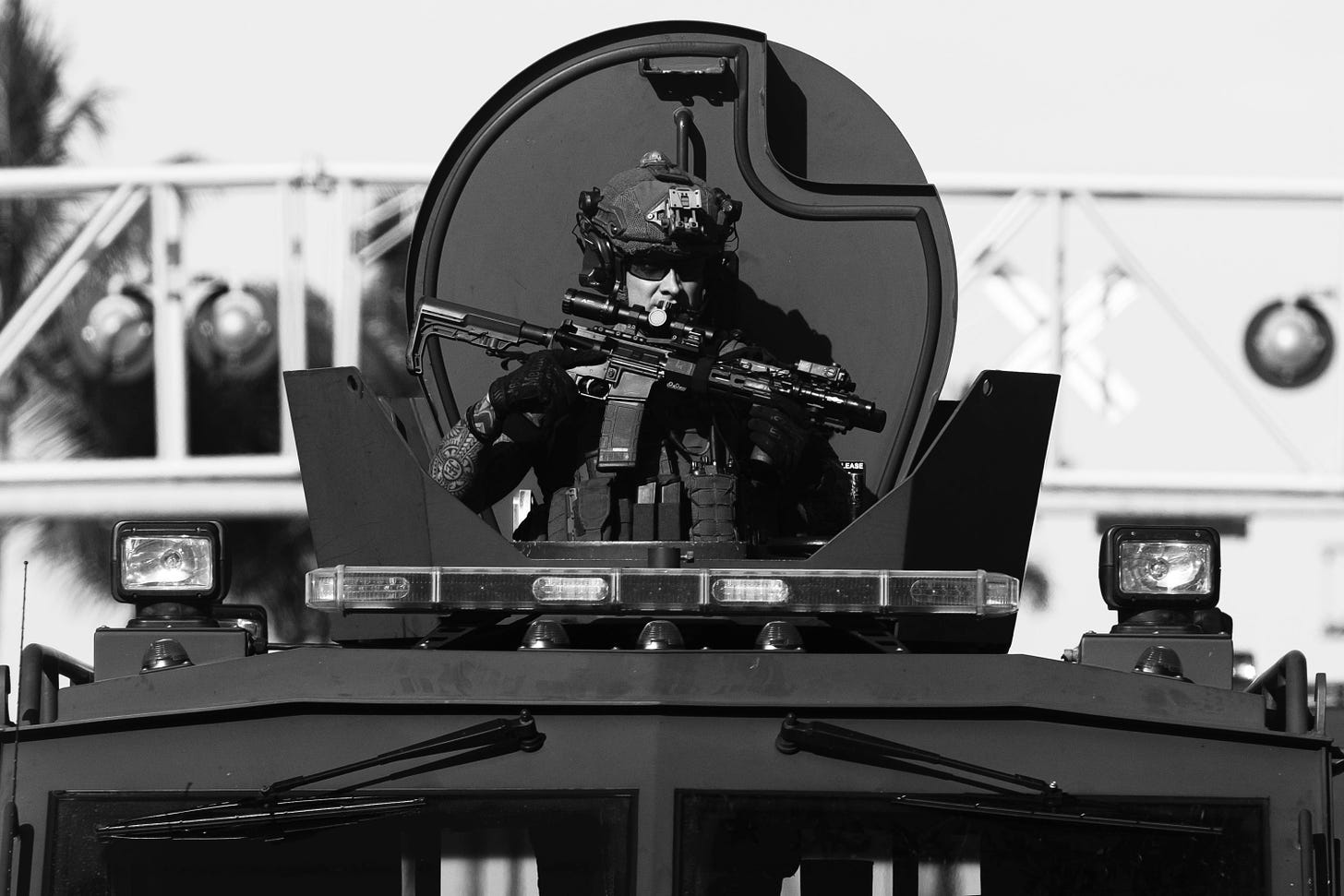
How to Change Lethal Force Rules for Police
The law governing the use of lethal force by police is far too broad and ill-defined.

On Monday, Democrats in the House of Representatives introduced the Justice in Policing Act of 2020.
The bill contains measures that, if passed into law, would make it easier to prosecute police misconduct and demilitarize police departments around the country. It also would change the legal standard in such lawsuits so that plaintiffs would only have to show that the police acted “recklessly” rather than “willfully.” Finally, it would end the qualified immunity that shields officers from lawsuits.
These reforms are important and it would be good if they were signed into law because they would help hold police accountable for their actions. But another pathway to reform is to start from the beginning and change guidelines under which police are authorized to use lethal force in the first place.
Under current law, police may use lethal force when neither their life nor the lives of others are in danger. In this way, they are given leeway well beyond what is accorded to private citizens.
The key case in granting them that leeway dates to 1985 when a police officer in Memphis, Tennessee killed Eric Garner (no relation to the Eric Garner who died in 2014 in New York City at the hands of the police). That Garner was an unarmed, black 15-year-old child. After being told to halt by police, he continued to run from the backyard of a house he was suspected of burglarizing. He was shot and killed.
Subsequently Eric’s father sued, claiming that the police shooting constituted an unreasonable seizure and violated his son’s Fourth Amendment rights.
When his suit reached the Supreme Court, the justices went back to the common law to understand the origins of the regulation of police use of lethal force. They determined that the original rationale was antiquated. It allowed police to kill fleeing felons because, at the time, most felonies were capital crimes.
The Supreme Court held that in order for police use of force to pass constitutional muster it must be “objectively reasonable.” It said that such force may not be used to apprehend suspects unless it is “necessary to prevent the escape and the officer has probable cause to believe that the suspect poses a significant threat of death or serious physical injury to the officer or others.”
The justices determined that the officer who shot Garner could not reasonably have believed that a young, slight, and unarmed person posed any threat. And, even if he had such a belief, “It is not better,” as Justice White wrote in his majority opinion, “that all felony suspects die than that they escape.”
Yet the Court gave little guidance about what might constitute a “reasonable” use of lethal force. It said only that “if the suspect threatens the officer with a weapon or there is probable cause to believe that he has committed a crime involving the infliction or threatened infliction of serious physical harm, deadly force may be used.”
Referencing the probable cause standard did little to restrict police. It simply restated the reasonableness standard using other language, without clarifying how a police officer would determine, in an instant, whether or not a suspect posed a “significant threat” of death or injury.
Moreover, the Court’s reference to a “significant threat” was a major departure from the legal standards governing the use of lethal force by private citizens in self-defense situations. For ordinary citizens, the law of self-defense requires that a threat be imminent or immediate.
Four years after Garner, in Graham v. Connor, the Supreme Court extended the reach of the Fourth Amendment to cover all excessive force cases. Graham, a black man who was diabetic and suffering from the effects of low blood sugar, was beaten by police officers who claimed he was drunk and threatening them. The Court again relied on the “objective reasonableness” standard as the key to defining the conditions under which the police could use force.
But in Graham the Court further opened the door to police violence by saying that the
“reasonableness” of a particular use of force must be judged from the perspective of a reasonable officer on the scene, and its calculus must embody an allowance for the fact that police officers are often forced to make split-second decisions about the amount of force necessary in a particular situation.
That “allowance” has played a key role in exonerating police in criminal prosecutions regarding the use of excessive force and the death of suspects.
The Court relied on this allowance again in 2014 when it determined that it was reasonable for police officers to shoot 15 rounds during an automobile chase that exceeded 100 miles per hour. As Justice Alito put it “In light of the circumstances…it is beyond serious dispute that the flight posed a grave public safety risk, and…the police acted reasonably in using deadly force to end that risk.”
Today, 35 years after Garner, the reasonableness standard and its accompanying allowances are still in place. But by now Americans should have learned that the police perception of “significant threats,” and the allowance that the Court affords them, are filtered through a racial lens and have resulted in a great deal of unreasonable police misconduct.
In light of the Floyd tragedy and countless other killings of unarmed African-Americans, Congress should not only make suing wayward police officers easier. It also should create incentives for states and localities to severely limit police authority to shoot citizens.
It is also time for the Supreme Court to recognize that the objective reasonableness standard is inadequate.
The Court should revisit Garner, end the allowance it has provided police, and restrict police use of lethal force to situations when their life or the lives of others are in imminent or immediate danger.









